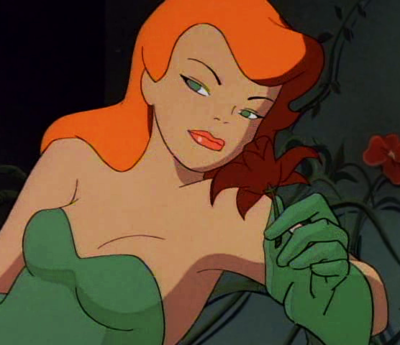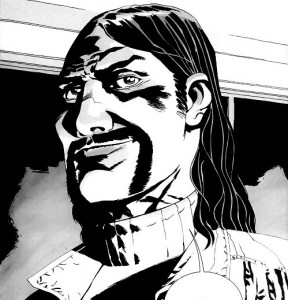We continue this month’s theme, Demons, with a look at the main types of demons as they relate to people’s pasts. There are two general focuses: internal and external.
Internally focused demons are probably more familiar than you like. They usually start with you saying, “If only I had [fill in word/deed here that supposedly would’ve saved the day].” This is Guilt, which grows into Self Loathing. It often turns into Depression.
The second type, external, starts with you saying, “If they had/hadn’t [fill in act that was necessary/unnecessary and that would’ve prevented the disaster that exploded later].” This is Blame, which grows into Hate. This often turns into Vengeance.
Heroes and villains can have either, or a bit or both. However, heroes usually lean toward playing the martyr. In other words, they’re demons’ focus is internal. Villains, on the other hand, have externally focused demons. This I supposed results from the villain’s inability to take blame for their actions, as often the demons stem from a legitimate sin on the part of the villain. This isn’t always true, though. Many of the most intriguing villains actually don’t have demons that come from their inability to take credit for their poor choices.
Ready to look deeper at these types, see a villain from each type, internal and external, and then learn how they can help us succeed in life?
Onward!
External:
If there’s one series-verse that’s overrun with demons, it’s DC’s Batman and his Gotham. I’m a huge fan of all things Batman-verse, partly because the characters have so many demons. Compelling, well written characters have motivations and pasts; they aren’t just cardboard cutouts that the writer brings on stage for a few minutes to fill a role.

Let’s start with…Poison Ivy. What’s that? You thought I’d choose Two Face or the Dark Knight himself first? Patience, grasshopper. Also, no.
I usually use the characters as they appear in Batman: The Animated Series, as the writers used a Writer’s Bible to keep the characters consistent through the series. The wonderful podcast the Arkham Sessions also covers B:TAS. I’ve listened to all the episodes, yes.
Poison Ivy in Batman: The Animated Series developed much of her demons after a group of men burst in and burned down her garden. This combined with her none too glamorous childhood encouraged her hatred of the human race in general and males in particular. She now sees plants as the rightful masters of the planet, even going so far as to – SPOILER – create plants that in their early stages resemble humans in every way. She used the human plants to pretend to be married and have children after she was released from Arkham. They turned into giant cacti when they were fully grown, then burgled banks and such for her. It’s the perfect family! But she did appear to wish, if just a bit, for a real family with real love.
Poison Ivy’s demons are externally focused. She sees humans, especially men, and sees that they’re harming her darlings the plants. She wants to take action to stop the devastation. The memory of her burning garden still blazes in her mind. How do we know her demon is externally motivated? It would be believable to hear her say, “If only those males hadn’t attacked my garden! I’ll stop them from ever doing anything like that again.” Internally motivated demons would prompt the statement, “If only I’d been strong, I’d have been able to stop the men. I’ll grow stronger to stop that from ever happening again.”
Notice, both statements are true. She may have been able to stop the destruction if she’d had different qualities. And of course, the men shouldn’t have burned her garden. See, the objective truth is that men came and burned her garden. What’s subjective is how she chose to process it. She attached all blame to the men, which gave her an external focus. This led to her thirst for vengeance and her need to protect plants. Things may or may not have been different if she’d chosen to focus internally. Changing herself would have led her to take action toward others – externally – eventually.
That leads us to a critical point: it’s not only the focus of the demons, internal or external, that matters, despite what society wants us to believe. The outworking of demons comes from the deep-seated character of a person’s heart. She gave into the violent, vengeful nature that’s in every one of us. She would use whatever method necessary to get her way. The ends justified the means. And you gotta admit, the “evil means” are pretty effective, at least in the short term. The long term is different: her methods couldn’t bring about lasting change, as they were bound to incite resistance from the world. Odds are she didn’t think any other ways existed to reach her goals. The anger in her heart blinded her to other solutions. Not a good thing.
Fun fact: Sometimes a character who desires a good end but uses sketchy methods is called an anti-villain.
Internal:
Now for one of the rarer breeds of villain: the villain with an internally focused demon. I’m going to call on Philip/Brian Blake, AKA the Governor from The Walking Dead: Rise of the Governor. What’s that? It’s a prequel book series to the Governor arc of the graphic novels. Or to a lesser degree it’s a prequel to season 3 of the TV series The Walking Dead. If you’ve not read the book, STOP RIGHT NOW!
GIANT SPOILERS.
I’M NOT KIDDING.

You asked for it. Philip is really Brian, Philp’s brother. Penny, the little Walker girl that’s supposed to be the Governor’s daughter, is in fact his niece. Brian was a rather weedy guy, while his brother was the strapping truck driver red neck with the Fu Manchu mustache. Philip could take out a whole herd of Walkers with just a couple hatchets. Well, as Philip, Brian, Penny, and a few friends tried to survive the zompoc, they ran into trouble of the human sort. Brian tried to protect Penny, but he wasn’t able. In his mind, if he’d been more like Philip, he could’ve saved her. Maybe this is true, maybe not.
As time goes by, Philip grows more violent, sadistic, and unstable. Eventually he and Brian have a confrontation. Brian does the only thing he can: he kills his rapist brother. It’s a good thing. Now, though, they’re in a community without their Big Dog to protect them. Brian assumes Philip’s identity, and with it Philip’s confidence, calm, and courage. How he becomes the Governor we all know and love will cover 3 more books.
It’s easy to see the internal focus of Brian’s demon: “If only I’d been a better fighter, a better protector, a better man, one like my brother, I could have saved Penny. I will become like my brother to stop this from happening again, or at least to survive.”
How does this apply to us? Good question.
Step 1.) Recognize whether your demons are internally or externally motivated. In other words, are you to blame primarily or is it someone/thing else?
Step 2.) What is the exact phrase you use to describe the guilt – of yourself or another? Finish this sentence if it’s external: “If only _[external responsible party]_ had/hadn’t _[action/inaction]_.” And this one if it’s internal: “If only I had/hadn’t OR was/wasn’t _[action or quality]_.”
Step 3.) Now fill in the sentence you didn’t fill in at first. Oh look, now you have two sides of the coin.
Step 4.) Realize that both sides have some truth and that we all have an ego to protect.
Step 5.) How is that demon hurting you the most? Is it that you said something unkind to someone and then they died and you never had a chance to reconcile? Is it that you made a stupid mistake and you feel like an idiot now?
Step 6.) If it’s something you CAN reconcile now, go do it. If you need to apologize to someone or tell them how you feel, do it.
Step 7.) What actions can you take NOW to help prevent the event from reoccurring? Put another way, what can you change that will prevent you from making a similar mistake? Now, I’m not saying go out and invent an immortality serum. The world would get really crowded if you did. Going to our example in Step 5, the one where you were hurtful to someone and that was the last thing you ever said to them. That one. Easy fix: never leave people on a bad note. Now for the one where you made a stupid mistake. Newsflash: we all make stupid mistakes. The key is to see why it was stupid. Were you hasty? Slow down. Were you too trusting? Get paranoid. Are you just beating yourself up? Learn to admit that you make mistakes but that every day is a chance for a new start.
That’s not by any means an exhaustive list! You get the gist, though.
In short, dealing with your demons is about getting to know yourself and about taking an objective look at the situation. Be honest with yourself. It’ll pay off. If you don’t you might end up “married” to a cactus or assuming your brother’s identity.
Further reading:
Hero or Villain? It Starts with Demons
Understanding the Joker: How he can help us succeed in life
Villainous Resilience: 15 Ways to bounce back like the Joker
How to be Villainously Positive: 18 ways with the Joker
Villainous opportunism: How to take advantage of every opportunity, Albert Wesker-style
Agree? Disagree? Let us know in the comments. Perform your own villain assessments with the Villain Matrix. Use the Villain Matrix spreadsheet that comes free when you join the Research Team, where you’ll also get our newsletter with its exclusive updates and content.